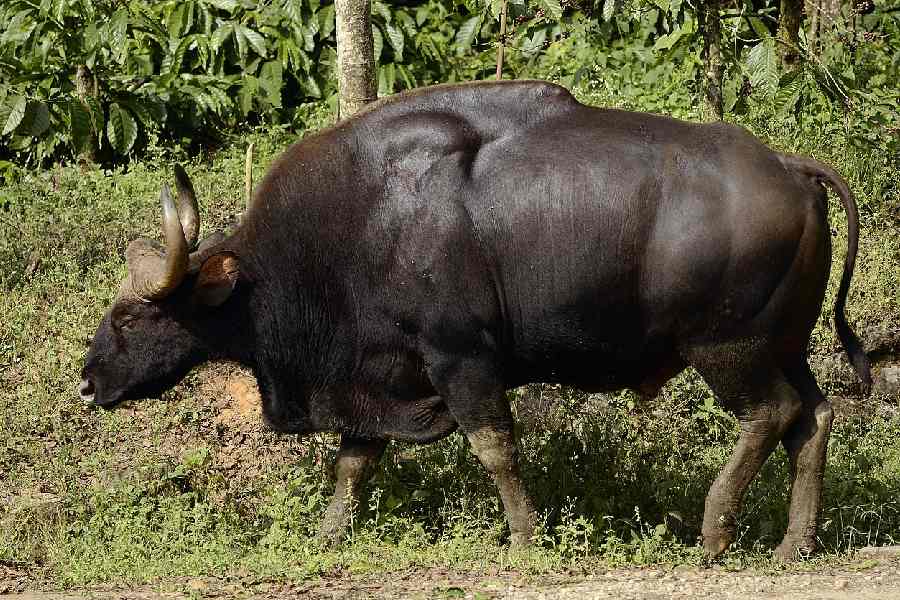A report said 659 Indian bison or gaurs were enumerated at Debrigarh Wildlife Sanctuary in western Odisha.
Of the 659 Indian bison, a major herbivore at the wildlife sanctuary, around 210, or 30 per cent of the total population, are juveniles.
The first ever census of the wild animal was conducted in the wildlife sanctuary by the forest department on November 12 and 13 and the report was released on Saturday.
During the census, 659 Gaurs were counted in 52 herds inside the sanctuary. The herd size varies from 8 to 33, Anshu Pragyan Das, DFO of Hirakud Wildlife Division, said.
She said 30 per cent of the Gaurs in Debrigarh being young indicates a fast growing population.
The census was conducted from 6 am to 6 pm by 53 units with 114 team members, she said.
The survey was conducted on foot with systematic surveys along the forest roads, animal trails, water bodies, grasslands and meadows, the DFO said.
The tourism zone in Debrigarh sanctuary has recorded the presence of more than 100 Gaurs in six herds, including a few massively built adult bulls.
Age-sex classification of the bison population could not be ascertained because of difficulty in identifying due to dense forested areas and the presence of tall grasses, she said.
The DFO said that the actual population of bison might be more because nearly 20 per cent of the wild cattle could have been missed due to restricted visibility and group movement creating hurdles in detection.
The entire Debrigarh Wildlife Sanctuary is crisscrossed by more than 60 seasonal and perennial nullahs and streams interspersing the hilly regions, valleys and plains. It also plays an important role in preserving the forested ecosystem.
Besides, primary nutritious grasses prevalent in the meadows of Debrigarh have contributed to the healthy population of Bisons, she added.
The Gaur or Indian Bison is the largest and tallest wild cattle in the world. It is Schedule-1 animal in Wildlife Protection Act, 1972, and in the vulnerable category in the International Union for Conservation of Nature (IUCN) Red List.
Except for the headline, this story has not been edited by The Telegraph Online staff and has been published from a syndicated feed.










